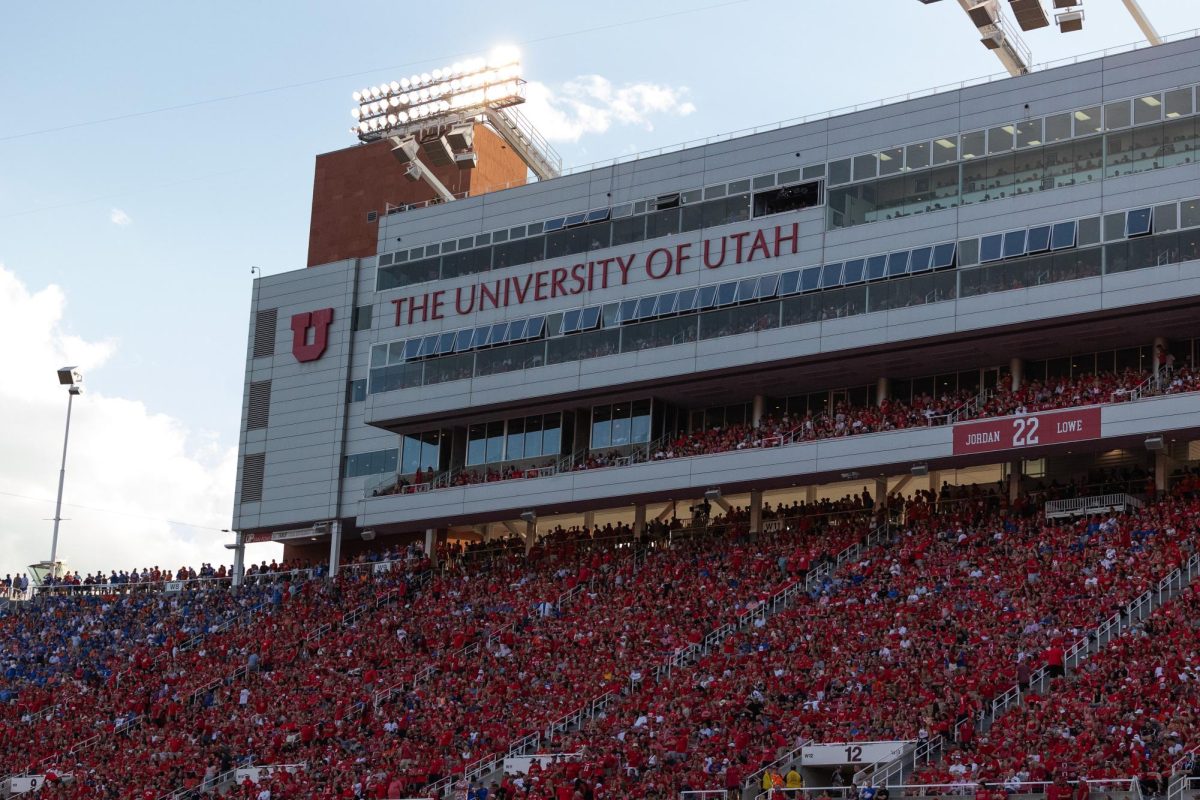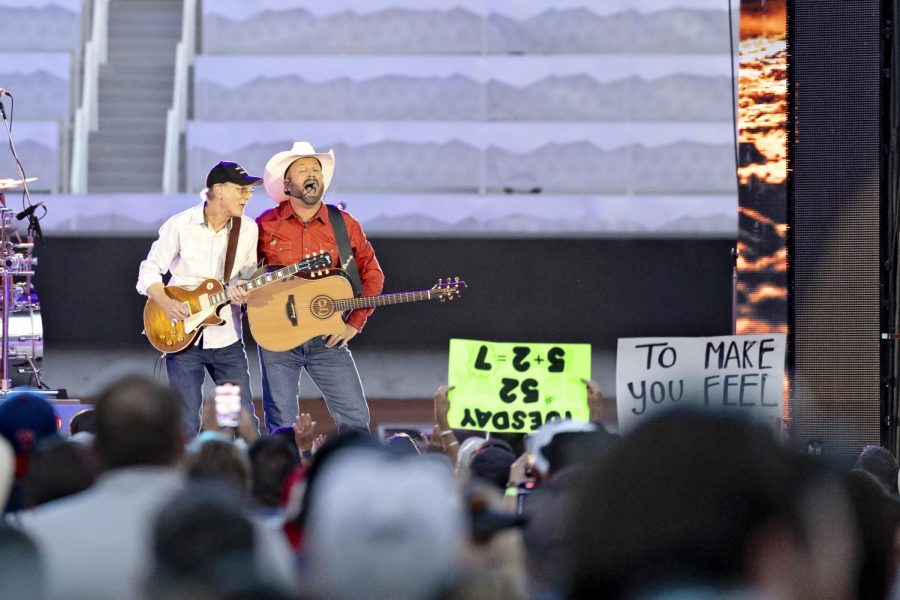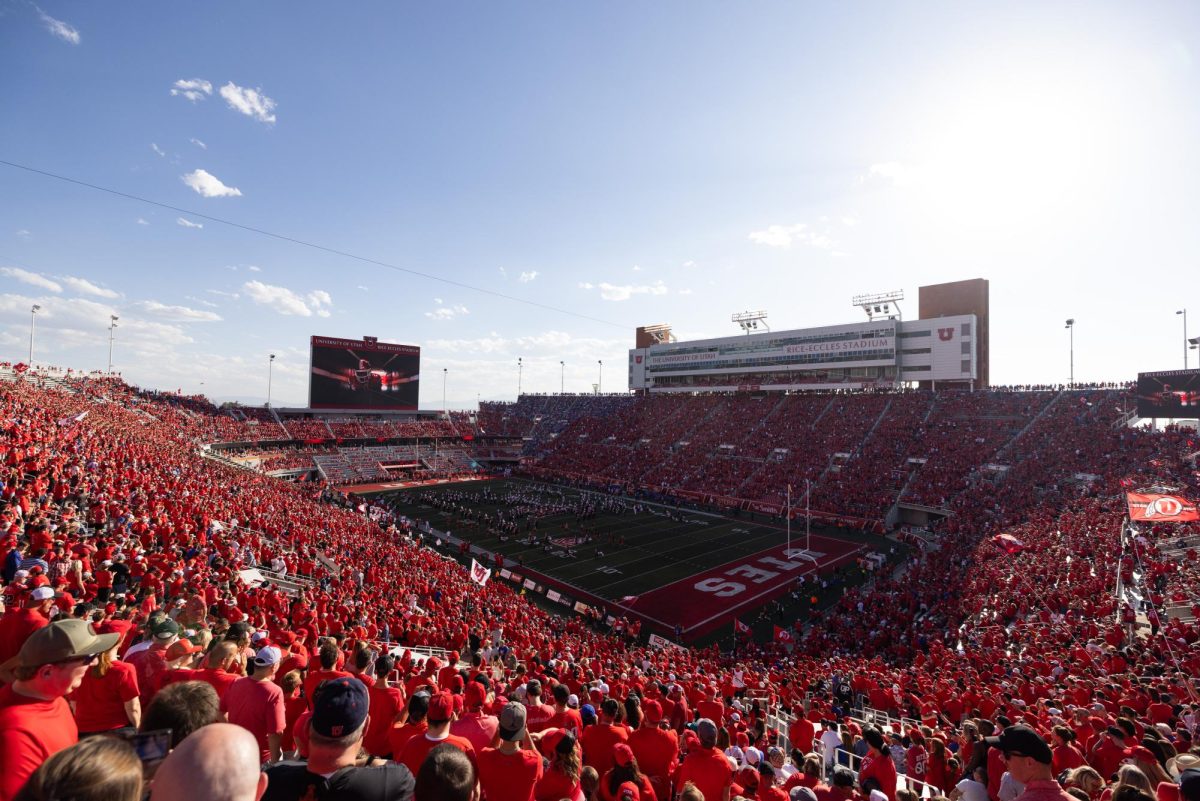University of Utah Football has seen great success over the last couple of years, most recently taking the Pac-12 championship title two years in a row, as well as two back-to-back appearances in the Rose Bowl.
Football season at the U has been a key part of campus life over the last 131 years, and many of those memorable moments have taken place at Rice-Eccles Stadium, but the stadium has not always been what it is today.
Utah Football’s Origins
In the 1800s, there was not much of a football presence on campus at the U. In fact, the stadium was in more of the downtown area of Salt Lake City. Historic Trolley Square was where the football team got their start, where they played against local high schools at first.
The first football game the U ever played was in 1892 against Utah Agricultural College, now Utah State University, in the Exposition Center — where they lost 12-0, said Michael De Groote, the director of communications for S.K. Hart Management.
In an interview with the Daily Utah Chronicle in August 2021, De Groote said that people would gather in the open area where Trolley Square now stands to watch the Utes play football.
The team only played there for a select number of games, until the land was sold back to the city.
Ute Stadium
The first stadium that was actually built on campus for football purposes was Ute Stadium, according to Rice-Eccles’ information sheet. This was the earliest version of Rice-Eccles.
Ute Stadium opened in 1927 with a capacity of 20,000. The stadium bore the name until 1971. The playing surface was natural grass.
Rice Stadium
By the 1970s, the Ute stadium was running out of room for all the Utah fans who wanted to attend the games. The 1972 expansion saw the capacity of the stadium increase from 20,000 to 32,500 seats, according to the information sheet.
The stadium was also renamed Rice Stadium, after Robert L. Rice. The Utah Alumni and businessman donated $1 million to renovate the stadium.
Awaiting the Olympics
Aaron White, director of stadium and arena event services at the U, said one of the biggest physical renovations that the stadium has undergone was in 1997-98, in preparation for the 2002 Olympic Games. The Eccles family donated $10 million toward the renovations.
The stadium underwent another name change at this time, becoming Rice-Eccles Stadium. The current name has been in place for nearly 30 years, aside from during the Olympics, when the stadium temporarily became Rice-Eccles Olympic Stadium.
According to the official Rice-Eccles stadium tour, the towers at Rice-Eccles were built in a “continuous format.” This means the cement for the towers was poured nonstop 24 hours a day until the 177-foot-tall towers were finished.
“It took seven days to pour these towers right here,” said the stadium tour guide, who wished to remain anonymous to protect her privacy.
White, who has been working with the stadium for 30 years in various roles, added after the football season, said the biggest change he has seen at the stadium during his time has been stadium ownership. Along with the renovations in 1997, the stadium became an auxiliary, meaning it was no longer owned and operated by the athletics department at the U.
This change affected the way the stadium was run and managed, and how funds were earned and dispersed. White added, “Most people do not understand that we don’t work for athletics.”
After the 1997-98 renovations, the stadium was upgraded from the original wood structure that was becoming worn down. This brought the seating capacity up to 45,807 seats. The playing surface was also upgraded to a combo between real grass and turf.
The 2002 Winter Olympic games began on Feb. 8, 2002 and the opening and closing ceremonies were both held at the stadium.
There is a small outdoor memorial located outside the stadium gates that is free to visit. There are signs about the different events for both the Olympics and Paralympics. The museum also holds the Olympic torch.
“The cauldron was made to look like an icicle,” the tour guide said. “I think it did a good job to make it fit the theme of fire and ice to match the motto of the Olympics, which was the fire within.”

Where It Stands Today
A large donation by the Garff family is one reason the stadium has stayed in good condition, with the south end zone seeing a dramatic increase in seating.
“That game day experience was greatly enhanced in the fall of 2021 with the completion of the Ken Garff Red Zone at Rice-Eccles Stadium, which added premium seating and increased capacity to 51,444,” White said. “The $80 million south end zone project was funded in part by a lead gift of $17.5 million from the Ken Garff family.”
This donation is the largest donation in Utah Athletics history.
The 2021 renovations also created the Ken Garff Members Only Club. Members get to sit in special suites along the south end zone and take part in other special events and perks. According to the tour, the restaurant has a full mixology bar and is the only place on campus where alcohol is served.
Other Ventures
Besides football, the stadium also hosts other events, including concerts. Notable events include the 2011 U2 concert, Imagine Dragons in 2018 and Garth Brooks in 2021. Next year, they will host country singer Luke Combs.

White said that the mindset of the stadium administrators has changed over the last couple of years.
“The stadium is more for the community and the students and we would like to see the students use the stadium,” he said. “We work with ASUU; we work with some of the housing; they do some events here.”
Throughout all the changes the stadium has undergone, one thing has stayed consistent.
“The stadium belongs to the students,” White said. “It belongs to the University of Utah.”





Paul Wm Gregerson • Feb 5, 2024 at 3:21 am
The Rolling Stones Voodoo Lounge Tour ♥️
♥️